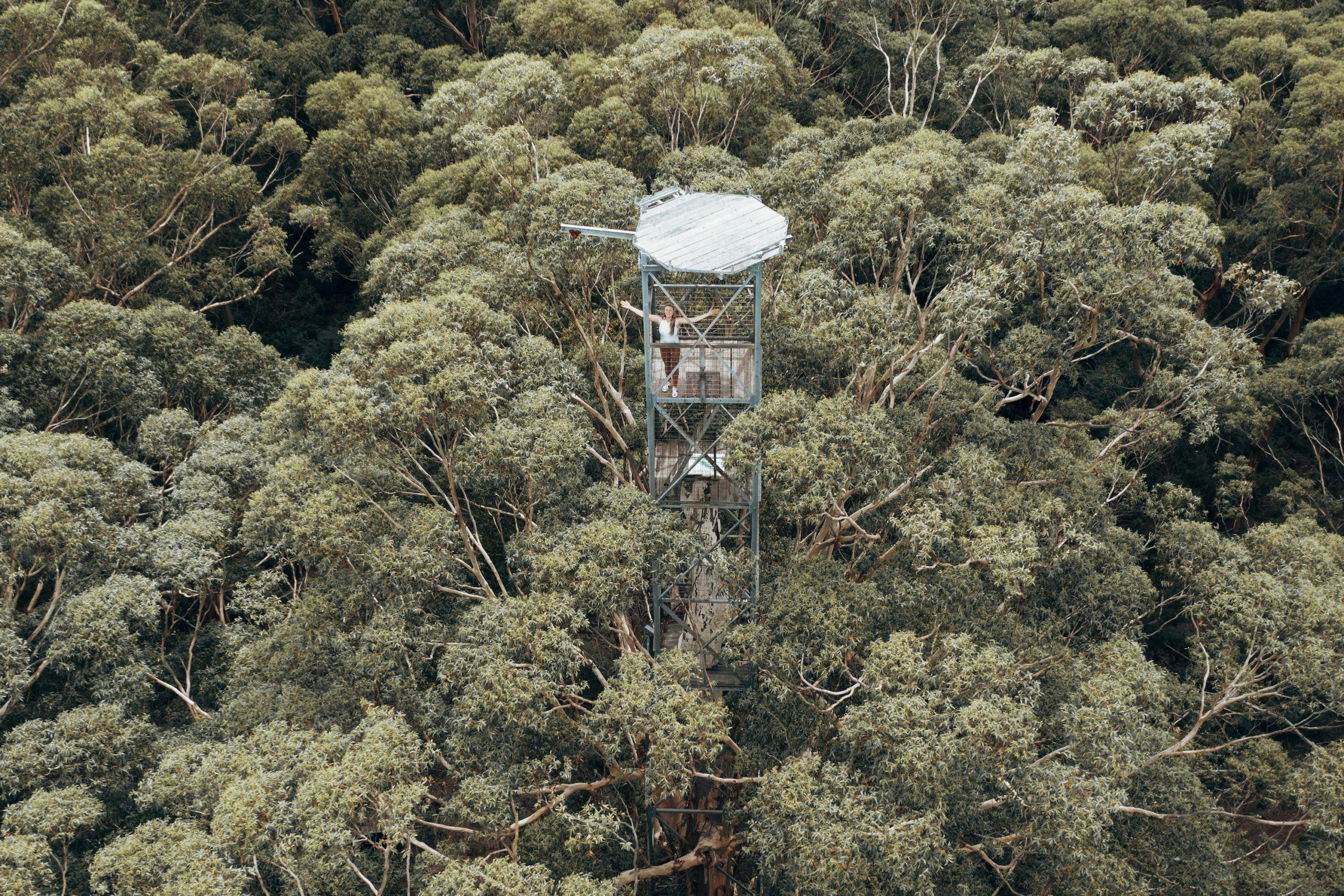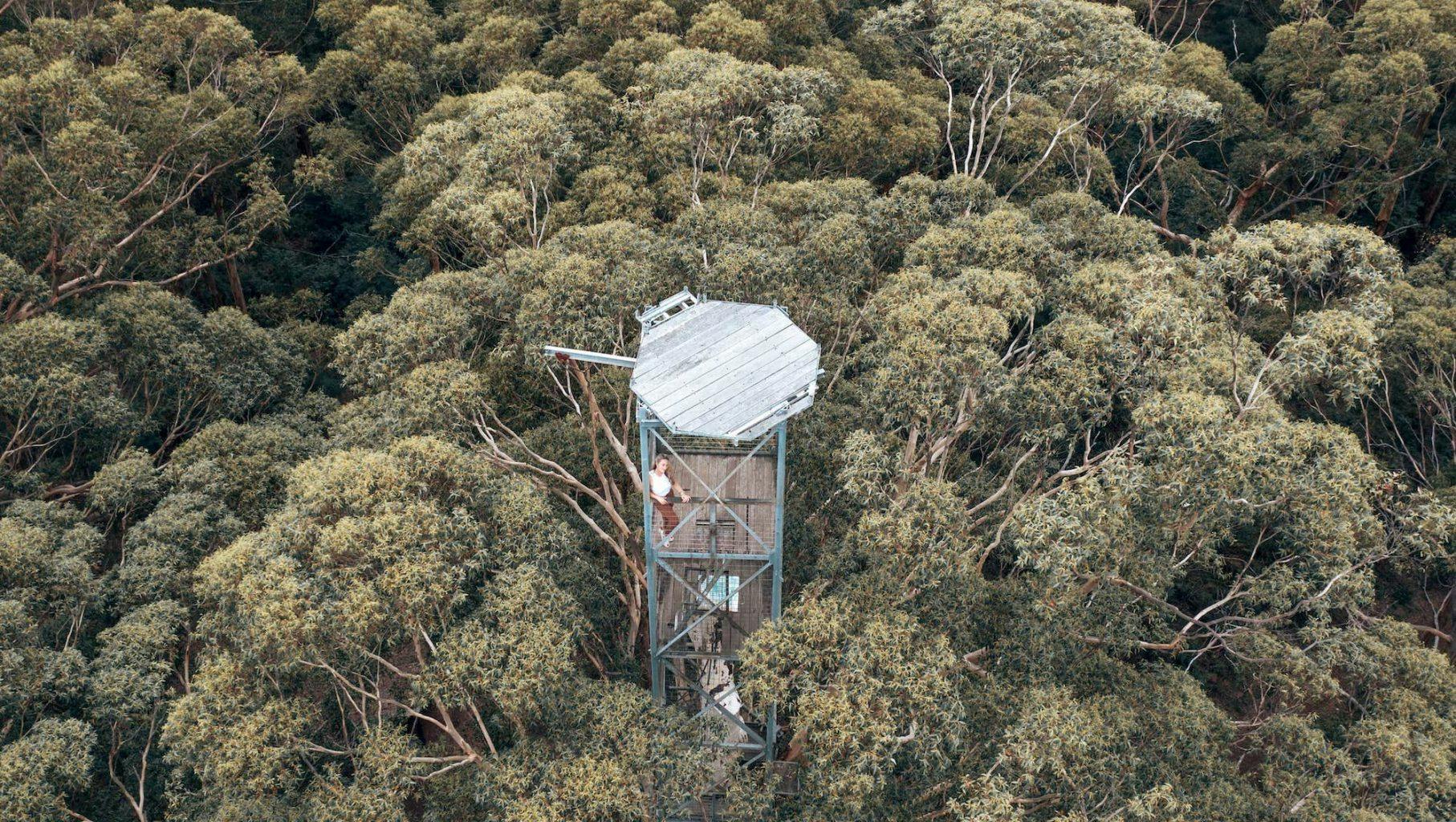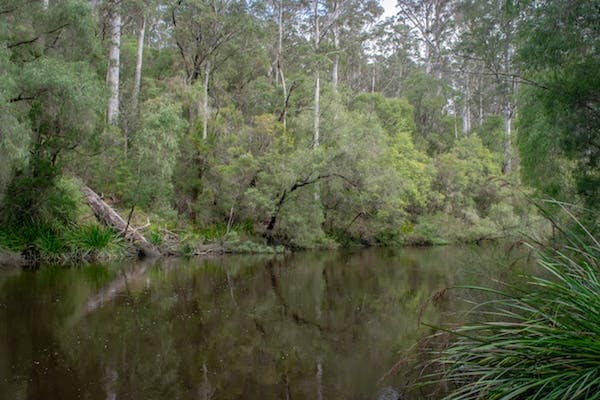Gloucester Tree and Dave Evans Bicentennial Tree: Everything you need to know

November 2023 Update: Gloucester Tree and Dave Evans Bicentennial Tree will be closed for at least the next 12 months.
As per the ABC: “We do regular inspections on the trees, including with engineers and arborists,” said Tim Foley from the Department of Biodiversity, Conservation and Attractions. “The trees are exposed to the elements … so we need some time to work through some additional technical advice [and] have a very close look at the structures and how they’re sitting on the trees.”
A permanent closure wasn’t ruled out: “We need that time to work through our options and consider how best we can work with the trees and hopefully preserve the tree climbing experience.”
Please check Explore Parks WA for updates as to when they re-open.
In the lush forests of Pemberton, two giants stand taller than the rest: the Gloucester and Dave Evans Bicentennial Trees.
A favourite for thrill-seekers and adventurers, climbing the trees provides an opportunity to take in the majestic canopy of the surrounding karri forests.
What is it?
A magnificent karri, the Gloucester Tree was instated in 1947 as a fire lookout – before the use of spotter planes, there was a network of trees in the south west forests, where lookouts would check for signs of smoke. One of eight lookout trees, there were a further ten built lookouts scattered throughout the south west. After being retired from use as a lookout, the tree is now a popular destination for brave visitors who want to try the climb.
About 20 minute’s drive away, you’ll find the Dave Evans Bicentennial Tree. Standing at 75 metres tall, it’s even larger than the Gloucester Tree, and was named after the local politician who held the seat of Warren between 1968 to 1989. The tree was pegged for climbing in 1988 in celebration of Australia’s bicentenary, and while it was never officially utilised as a fire lookout, it has been used in cases where spotter planes were unable to fly.

Where is it?
Both trees are just outside of Pemberton, just under four hour’s drive from the Perth CBD. The Gloucester Tree is just outside of town, within the Gloucester National Park. A short drive away, the Bicentennial Tree sits within the Warren National Park, a haven for old-growth karri forest and fed by the Warren River.
What to do?
With 153 metal pegs, you can climb to the Gloucester Tree lookout 53 metres off the ground in the 61 metre tall tree – originally built from timber, the platform has since been reconstructed in steel. Reportedly, only 20% of visitors complete the climb and reach the lookout! You can take in the glorious surrounding forest on foot or on two wheels, with sections of the Bibbulmun Track and Munda Biddi Trail in the area, while Gloucester National Park itself is filled with various bushwalking trails. The park is also home to a spectacular series of waterfalls, the Cascades, which flow from the Lefroy Brook. Bring a keen eye to spot some native mammal species such as quendas, dunnarts and even quokkas.
Subscribe to our free newsletter!
The Bicentennial Tree has a lookout at 65 metres high (that’s 165 pegs!) which you can test your nerves climbing to – although you can stay on the ground and explore the surrounding park on foot if you’re not a fan of heights. The 11km Warren River Loop Trail is a fantastic way to see the park and immerse yourself in the little details that make this place so wonderful:

What not to do:
As with all visits to our natural spaces, adhere to the Leave No Trace Principles: meaning don’t leave any rubbish out there, don’t pick wildflowers and try your best to look after the surrounding area. Make sure you also adhere to any fire restrictions or bans that might be in place.
With the threat of dieback a big issue all over Western Australia, make sure you wash your boots/shoes before and after any walks and if possible do the same to your vehicles before and after visiting the parks (the pathogen that spreads the fungus is carried in soil and water so is easily spread).
Don’t attempt any climbs if your fitness isn’t up to it, or if the weather is wet or windy as the pegs will become slippery! If you do climb, make sure to wear suitable shoes and leave any backpacks on the ground.
Header image: Shutterstock